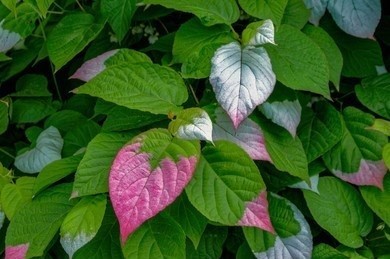Actinidiaceae Plants Tissue Culture
Actinidiaceae plants include about 360 species in three genera distributed in temperate and subtropical regions of Asia, Central and South America, mostly as trees, shrubs, and woody vines. Recent studies have shown that some plants in this family have anti-cancer and hypolipidemic activities, and are also important materials for vertical greening in gardens, with broad development prospects.

At present, seedlings of Actinidiaceae plants are mainly propagated by seeds and cuttings, but they are limited by the season, the number and quality of mother plants, resulting in long propagation cycles, uneven seedling growth, and low propagation coefficients, which slow down the domestication and promotion of excellent resources. Therefore, Lifeasible has utilized tissue culture as an efficient method of propagating seedlings of Actinidiaceae plants for efficient and rapid variety breeding and propagation of good seeds.
Tissue culture service
Almost all tissue organs of Actinidiaceae plants can be used as explants for tissue culture studies. According to the differences of the used exosomes and culture routes, the tissue culture of Actinidiaceae plants provided by Lifeasible can be divided into stem tip and stem segment culture, leaf and petiole culture, root segment and fruit culture, pollen and anther culture, embryo culture, endosperm culture, and protoplast culture. And we have established a suitable system for the fast propagation of Actinidiaceae plants in tissue culture by screening different hormone concentrations and ratios.
- Actinidia arguta
- Actinidia chinensis
- Actinidia chinensis var. chinensis x Actinidia melanandra var. melanandra
- Actinidia melanandra x Actinidia chinensis
- Actinidia arguta x Actinidia deliciosa
- Actinidia arguta x Actinidia chinensis
- Actinidia callosa Lindl.
- Actinidia eriantha Benth.
- Actinidia deliciosa
In the process of plant tissue culture, the ability of different explant materials to induce healing tissues and adventitious shoots varies greatly, and even for the same kind of explant, different placement methods can affect the fast propagation effect. Meanwhile, different growth regulators (hormones) will play different roles in the tissue culture process, and growth hormone and cytokinin play a very critical role in tissue growth in tissue culture. In addition, the type and concentration of carbon source will also affect the effect of tissue culture fast propagation.
- The use of stem tip and stem segment culture can shorten the breeding cycle and greatly improve the propagation efficiency.
- Leaf culture can produce adventitious buds directly, or induce healing tissues before differentiating buds, with different regeneration efficiency by different routes.
- Embryo culture can effectively overcome the phenomenon of embryo defeat in distant hybrids and provide an effective way to breed early and extra-early maturing as well as haploid, triploid and pentaploid varieties.
- The isolated endosperm culture has opened a new way to breed triploid Actinidiaceae plant species. In general, triploid plants have huge fruit phenotypes and high sterility, thus facilitating the breeding of new seedless or seedless Actinidiaceae plant varieties.
- Protoplast culture can overcome the problem of distant hybrid incompatibility and can be widely used for the genetic improvement of Actinidiaceae plants.
You want to sign a confidentiality agreement.
You have a specific plant species for your experimental needs.
You have a reliable and relevant cooperation project to discuss.
You are very interested in our project or have any questions.
You need an updated and detailed quotation.
For research or industrial use.



